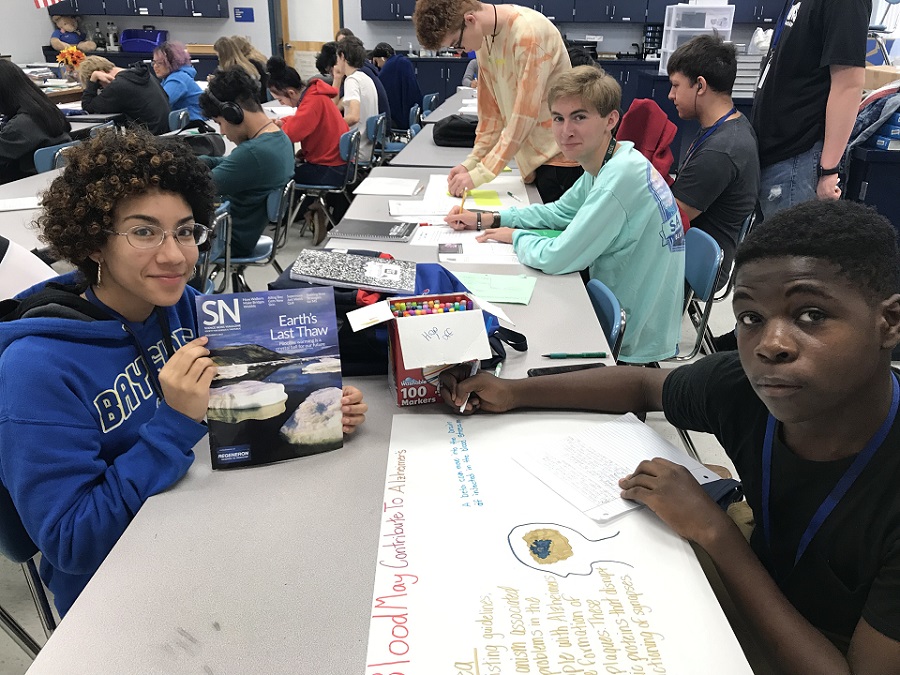Science News, Science News Learning, STEM Outreach
Teacher notes: Here’s How SNHS Has Become an Integral Part of This Florida Teacher’s Classroom

We had a chance to catch up with Andrea Distelhurst, a biology teacher at Bayshore High School in Bradenton, Florida, to see how she was using Science News in High Schools materials, recently featured in Mashable, to engage her students. Andrea’s virtual lessons now include web links to PDFs of Science News articles so that students can continue to interact with the most up-to-date science. She learned about the Society’s High School Research Teachers Conference in 2017 through her participation in SNHS. She has also used Science News for Students articles to devise activities for her students and expand upon their scientific research. We share her insights below.
How have you been able to adapt SNHS program resources for your students while teaching remotely?
I am using Science News articles as my text for all my classes. Traditional textbooks are never great and online access is spotty and depends on the devices that students have access to. By using web links, PDFs and videos, my students can look at current information on different subjects. They can also see the evolution of a topic as updates become available.
Most recently, I assigned “Can plasma from recovered COVID-19 patients treat the sick?” to my students and gave them a writing prompt to analyze the evidence presented in the article. I also directed them to read “How 2019’s space missions explored distant worlds” and asked for their own rankings of the missions based on importance, encouraging them to explore additional articles in the Science News archives that provide more in-depth information about each mission mentioned.
Are there specific activities your students participate in, using Science News in High Schools, to meet classroom goals?
Our textbooks only provide very basic, outdated information and are never written at a level that accommodates all students. The Science News in High Schools articles and paired resources are written at a level that serve to whet the appetite of students who want to know more about science. The articles are trendy while based in real science so my students start discussions and debates. I use the articles throughout the school year to supplement or replace text.
I use the Educator Guides as sources for writing and discussion prompts throughout the year, specifically for my activity called a One-Pager where students work in groups to read an article and create a movie trailer-like poster to share the key points in the article. This promotes reading with a purpose, visual communication of science products and team work.
What has the impact been on your students?
One of my favorite ways to use Science News is as a starting point for student research. I give students different Science News issues to find topics that interest them. I also send them to the website to find more articles on the topic and then decide on a course of action for further research. This path has led to science fair projects and really intriguing experiments, but mostly, it engages students to learn about science on their own terms. We are always looking for ways to keep our students interested while they deal with high-stakes, standardized testing, required classes and the terrifying prospect of becoming adults. If they can learn a little bit about concepts that affect them and enjoy the process, then we all win.
Public high school educators who are interested in ensuring their school’s sponsored spot for the next school year can sign up here.


